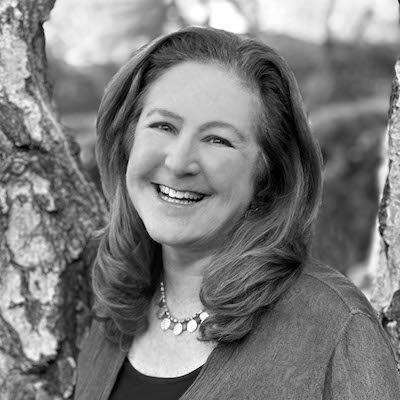Building Science, Technology, and Sustainability
The Master of Science and PhD in Building Science, Technology and Sustainability faculty at Berkeley study environmental quality in buildings, and ways of producing desirable environments in an energy – and resource – efficient manner.
The Program
The environmental attributes studied (thermal, luminous, air quality, acoustic) have both physical and psychological dimensions. The intellectual objective of graduate research in building science is uncovering the processes by which a building affects its occupants, evaluating the human/economic/energy consequences of the effects, and incorporating this knowledge in new procedures to design more acceptable buildings.
A secondary objective is to prepare the student for a career involving building science, by having them participate in important funded research ongoing at Berkeley, and by engaging them in the activities of the professional societies where research is presented, debated, and put into forms that influence design practice.
Research
Building Science, Technology and Sustainability Research at Berkeley can be divided into the following categories:
Environmental requirements for occupant: health, satisfaction, comfort, and productivity. We have worked extensively on thermal comfort standards appropriate for energy-conserving building design, on lighting and are also involved in ventilation and air quality standards. We have also developed climatic requirements for pedestrian safety and comfort in the outdoor environment.
Design of climatically adapted buildings that conserve energy and that may help preserve (in naturally heated, cooled, lit and ventilated buildings) long-standing architectural traditions and patterns of habitation. Although the general principles by which such buildings operate are well-known, it is very difficult to predict their actual performance in terms acceptable to a designer. We have developed a number of computerized design methods to help put climatically-adapted architectural and energy efficient mechanical systems on a quantified footing.
Integrated and personalized conditioning systems to improve the energy efficiency and living quality in buildings, both at the large commercial and the residential scale. Our past work has concentrated on heating and ventilating, lighting, windows and glazing, and new solutions that provide occupants with control of their personal environments. We work on radiant and underfloor air distribution systems. We also develop technology and post occupancy survey techniques with which one can diagnose how well a building is performing.
Innovative structures and new fabrication techniques that transform the way buildings are designed, built, and operated. With this pioneering area, we are investigating a different approach to design and construction that integrates hitherto neglected structural behaviors such as bending and buckling as potential form-giving strategies for flexible and adaptive structural systems. By incorporating emerging building technologies such as elastic structures, smart materials, and 3D printing, we are exploring the potential of producing mass-customized functional parts that are tailor-made for their task and can provide a time and material-efficient alternative to traditional construction processes.
Parametric and generative design methods to support architects in designing sustainable buildings from early design stages. Design decisions with higher impact on future building energy consumption are typically made at conceptual stages. However, it has been difficult to develop ways to integrate energy and sustainability into those architecture design workflows. Taking advantage of recent developments in computational approaches, such as parametric and generative design, optimization through heuristics, and new evaluation metrics in daylighting and comfort, we develop innovative ways for early deployment of sustainability knowledge into pedagogical and professional practice.
Design and simulation in immersive environments allow architects to design and modify buildings within Virtual Reality (VR) or Augmented Reality (AR) platforms. Following the creation of our AR/VR Architecture laboratory, we are developing methods to support interactive design in immersive environments, and to simulate environmental factors from inside VR models. Using state-of-the-art, research grade simulation software, our platforms enable architects to get immediate and accurate feedback on the impact of design decisions on the sustainability performance of their buildings.
Courses
Coursework is largely decided on an individual basis through consultation between the student and his or her advisor. In general, each student will be required to develop competence in a range of building science, technology and sustainability topics that border the main topic of interest. Students often participate in research projects conducted by the faculty for external sponsors. Thesis research can be structured in many ways, but must be based on an appropriate combination of theory, modeling, digital simulation, physical prototyping, and testing in the laboratory or field.
Faculty
The following are members of the MS/PhD faculty who focus on the subject area of Building Science, Technology and Sustainability. Please also review the current list of all faculty in the Department of Architecture. Samples of faculty research can be found in the faculty research projects. Also, visit the Center for the Built Environment (CBE) website for current news and research updates.
-
 Director of the Center for Environmental Design Research; Distinguished Professor of ArchitecturePassive design strategies, comfort and adaptation in naturally ventilated buildings, post-occupancy evaluation, personal comfort systems
Director of the Center for Environmental Design Research; Distinguished Professor of ArchitecturePassive design strategies, comfort and adaptation in naturally ventilated buildings, post-occupancy evaluation, personal comfort systems -
 Professor of ArchitectureVirtual and augmented reality, immersive environments, collaborative platforms in VR/AR, sustainable architecture, net zero buildings, daylighting in architecture, generative design, parametric design
Professor of ArchitectureVirtual and augmented reality, immersive environments, collaborative platforms in VR/AR, sustainable architecture, net zero buildings, daylighting in architecture, generative design, parametric design -
 Professor of ArchitectureNatural materials innovation and flood resilience, engineered living materials, functionally graded materials and additive manufacturing, solar water regeneration building envelopes
Professor of ArchitectureNatural materials innovation and flood resilience, engineered living materials, functionally graded materials and additive manufacturing, solar water regeneration building envelopes -
 Associate Director of CEDR; Professor of Architecture and Civil & Environmental EngineeringSustainable architecture, architectural engineering / building science, indoor environment quality, HVAC systems, building energy efficiency, thermal comfort, well-being, post-occupancy evaluation
Associate Director of CEDR; Professor of Architecture and Civil & Environmental EngineeringSustainable architecture, architectural engineering / building science, indoor environment quality, HVAC systems, building energy efficiency, thermal comfort, well-being, post-occupancy evaluation -
 Associate Professor of ArchitectureLightweight design and biomimetics, structural design, parametric design, digital fabrication, robotic manufacturing
Associate Professor of ArchitectureLightweight design and biomimetics, structural design, parametric design, digital fabrication, robotic manufacturing -
 Assistant Professor of ArchitectureComputational design, sustainability, structural modeling, generative design, embodied carbon
Assistant Professor of ArchitectureComputational design, sustainability, structural modeling, generative design, embodied carbon